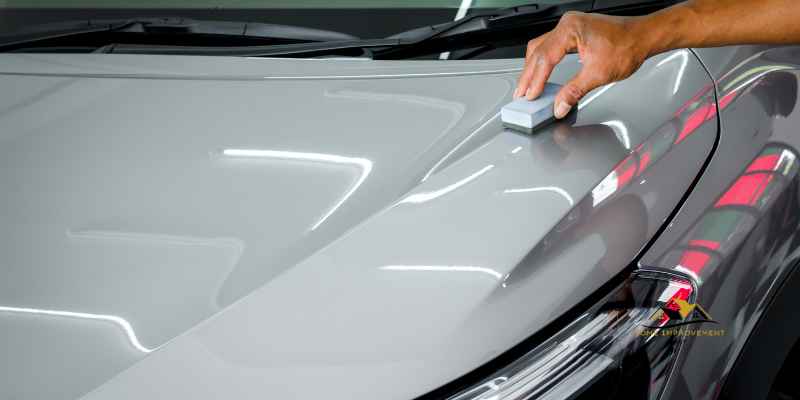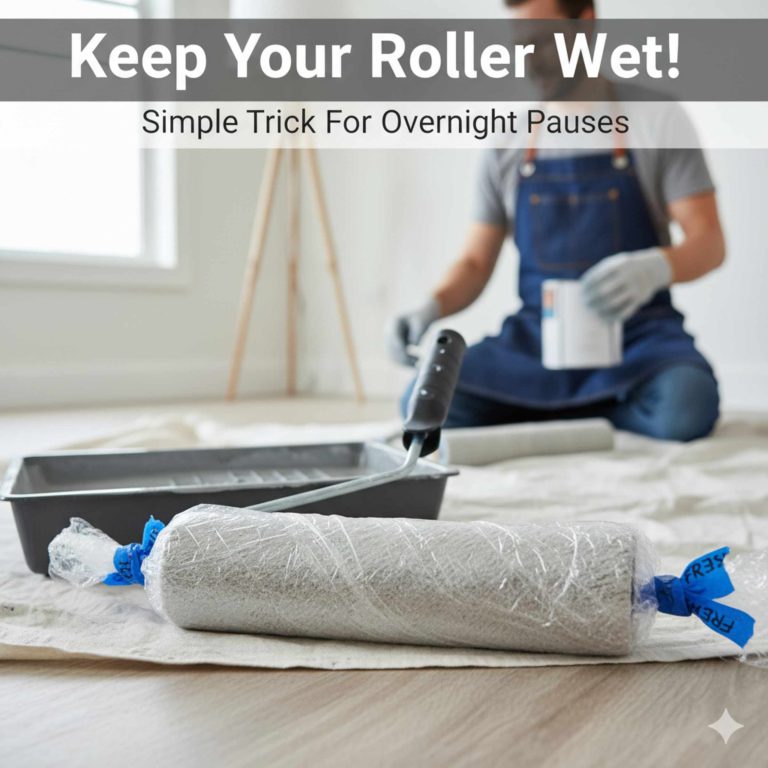Adhesion Test for Coating: Ultimate Guide
The adhesion test for coating determines the strength of the bond between the coating and substrate using various instruments. When testing coating adhesion, it is crucial to ensure the bond between the coating and substrate is strong and durable.
Various instruments, such as universal testing machines, peel testers, and scratch testers, can be used to perform these tests. Mechanical tests can reveal the cohesion and adhesion of the coating, as well as its resistance to deformation, cracking, and wear.
Adhesion testing is essential for ensuring the quality and longevity of coatings in various industries, including construction, automotive, and manufacturing. By understanding the adhesion properties of coatings, companies can make informed decisions about materials and application methods to ensure optimal performance and durability.
Types Of Adhesion Tests
When it comes to assessing the adhesion of coatings, various tests are employed to determine the strength and integrity of the bond between the coating and the substrate. These tests are essential for ensuring the quality and performance of the coatings. Below are some of the commonly used types of adhesion tests:
Cross Hatch Adhesion Test
The cross hatch adhesion test involves making a grid of parallel cuts in the coating, followed by a second set of cuts perpendicular to the first. This test evaluates the adhesion by assessing the amount of coating removed from the substrate.
Scratch Test
In the scratch test, a pointed or sharp object is used to scratch the surface of the coating to determine its resistance to damage and detachment. The test provides insight into the adhesion and durability of the coating.
Pull-off Adhesion Test
The pull-off adhesion test measures the force required to pull a coating off the substrate. It helps in evaluating the bond strength and adhesion properties of the coating, providing valuable data for quality assessment.
Dolly Adhesion Test
With the dolly adhesion test, a metal dolly is bonded to the coating using adhesive, and then a force is applied to pull the dolly off the substrate. This test assesses the bond strength and adhesion at a specific point on the coating.
Tape Test
The tape test involves applying and removing adhesive tape from the coating to evaluate the adhesion quality. It helps in determining the resistance of the coating to peeling or detachment under stress.
Push-off Adhesion Test
The push-off adhesion test involves applying a force perpendicular to the coating to assess its resistance to detachment. This test provides valuable insights into the adhesion strength and durability of the coating.
Instruments For Adhesion Testing

When testing the adhesion of coatings, various instruments play a crucial role in determining the quality and durability of the coating. These instruments aid in assessing the strength of the bond between the coating and the substrate, ensuring optimal performance.
Universal Testing Machines
Universal testing machines are versatile tools used to measure the tensile and compressive strength of materials, including coatings. They provide valuable insights into the adhesion properties of coatings under different stress conditions.
Peel Testers
Peel testers are specifically designed to evaluate the adhesion strength of coatings by measuring the force required to peel them off a substrate. This test helps in determining the bond integrity and durability of the coating.
Hardness Testers
Hardness testers assess the resistance of coatings to indentation or penetration, providing information on their adhesion characteristics. By measuring the coating’s hardness, this test helps in understanding its ability to withstand external forces.
Scratch Testers
Scratch testers evaluate the coating’s resistance to scratching and abrasion, simulating real-world wear and tear. This test enables the assessment of adhesion strength and the coating’s ability to maintain its integrity over time.
Tribometers
Tribometers are used to measure the friction and wear properties of coatings, offering insights into their adhesion performance under varying conditions. By analyzing the coating’s tribological behavior, this test helps in determining its longevity and reliability.
Mechanical Properties Revealed By Adhesion Tests
Cohesion and adhesion are key mechanical properties that adhesion tests can reveal. Cohesion refers to the internal strength of the coating, while adhesion signifies how well the coating bonds to the substrate.
Resistance to deformation is crucial for the durability of coatings. Adhesion tests help determine how well a coating can withstand forces that may cause deformation.
Resistance to cracking is another critical aspect evaluated through adhesion tests. These tests provide insights into the coating’s ability to resist cracks under stress.
Resistance to wear is essential for coatings exposed to abrasive conditions. Adhesion tests can help assess how well a coating can withstand wear and maintain its integrity over time.
Surface Coating Testing Methods
When it comes to ensuring the quality and durability of surface coatings, various testing methods are employed to evaluate the adhesion, cohesion, and overall performance of the coating. These methods play a crucial role in determining the suitability of a coating for specific applications and environmental conditions.
Overview Of Testing Methods
Surface coating testing methods encompass a range of techniques designed to assess the adhesion, cohesion, and other properties of coatings. These methods provide valuable insights into the performance and durability of coatings in real-world applications. Some commonly used testing methods include:
- Pull-Off Adhesion Testing
- Balanced-Beam Scrape-Adhesion Test
- Cross-Cut Test
Pull-off Adhesion Testing
Pull-off adhesion testing is a widely used method to evaluate the adhesion strength of coatings. This test involves applying a controlled force to pull a specified area of the coating from the substrate. The force required to detach the coating provides a quantitative measure of its adhesion strength.
Balanced-beam Scrape-adhesion Test
The balanced-beam scrape-adhesion test is a method that involves using a balanced beam to apply a scraping force to the coating. This test helps assess the cohesive strength of the coating by determining the point at which the coating begins to fail under the applied force.
Cross-cut Test
The cross-cut test is a qualitative method used to evaluate the adhesion of coatings by making a series of closely spaced cuts through the coating. The resulting pattern of cuts allows for the visual assessment of the coating’s adhesion, particularly its resistance to detachment and flaking.
Understanding Adhesion In Coatings
Adhesion in coating refers to the bond strength between the coating and substrate.
- Mechanical Interlocking Theory
- Adsorption Theory
- Diffusion Theory
- ISO 2409: Cross-Cut Test
- ISO 16276: Pull-Off Test
- ISO 4624: Tape Test

Popular Adhesion Testers
When it comes to testing the adhesion of coatings, it is essential to use reliable and accurate adhesion testers. Popular adhesion testers in the industry include DeFelsko Adhesion Testers, Elcometer Inspection Equipment, and ASTM Paint Adhesion Testing.
Defelsko Adhesion Testers
DeFelsko offers a range of adhesion testers that are widely used in the industry. These testers provide precise and consistent results, making them a preferred choice for professionals in the field.
Elcometer Inspection Equipment
Elcometer Inspection Equipment is known for its high-quality adhesion testing solutions. Their equipment is designed to meet the stringent requirements of the coatings industry, ensuring accurate and reliable adhesion test results.
Astm Paint Adhesion Testing
ASTM standards are widely recognized in the industry for their rigorous testing methods. ASTM Paint Adhesion Testing provides standardized procedures for assessing the adhesion of coatings, offering a reliable benchmark for quality control and compliance.
Frequently Asked Questions
How Do You Test Coating?
To test coating, use instruments like peel testers, scratch testers, and tribometers to assess its cohesion, adhesion, and resistance to wear. Mechanical tests reveal the bond between the coating and substrate, resistance to deformation, cracking, and wear.
What Is Pull Off Adhesion Test For Coating?
Pull off adhesion test for coating is a mechanical test that determines the adhesion strength of a coating to its substrate by applying force to a small area of the coating and measuring the amount of force required to remove it.
This test is performed using a pull-off adhesion tester and is used to evaluate the quality and durability of a coating.
What Is Adhesion In Coating?
Adhesion in coating refers to the strong bond between the coating and substrate. It is tested using instruments like universal testing machines and peel testers to measure the bond’s strength. The tests reveal the coating’s cohesion, adhesion, and resistance to wear and deformation.
What Is The Iso Standard For Adhesion Test?
The ISO standard for adhesion testing is determined by pushing the coated panels beneath a rounded stylus or loop that is loaded in increasing amounts until the coating is removed from the substrate surface. A balanced-beam scrape-adhesion tester is used to measure adhesion.
Conclusion
Performing adhesion tests on coatings is crucial to ensure the durability and longevity of a coating system. By using different types of adhesion testers, such as pull-off, cross-cut, and scrape adhesion tests, one can determine the adhesion strength of a coating to its substrate.
It is important to follow the proper procedures and standards, such as ISO standards, to obtain accurate and reliable results. By conducting adhesion tests, one can assess the quality of a coating system and make necessary adjustments to improve its performance.







